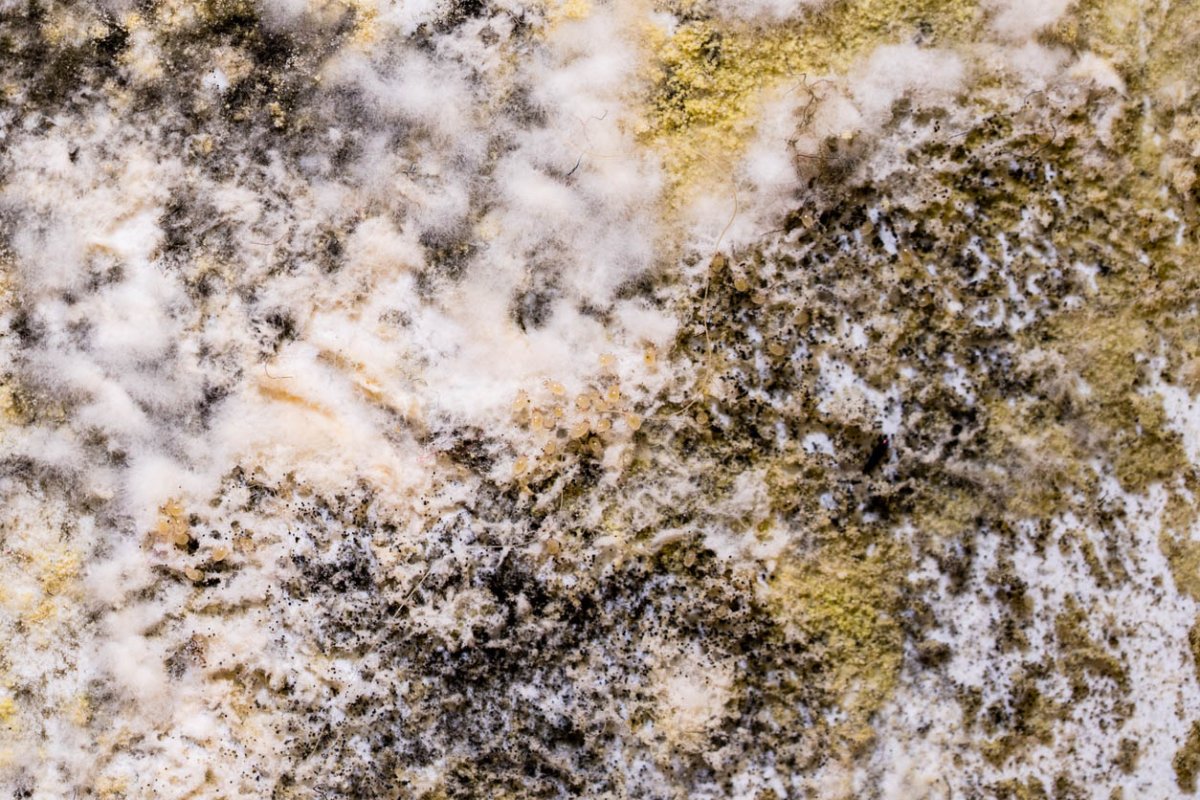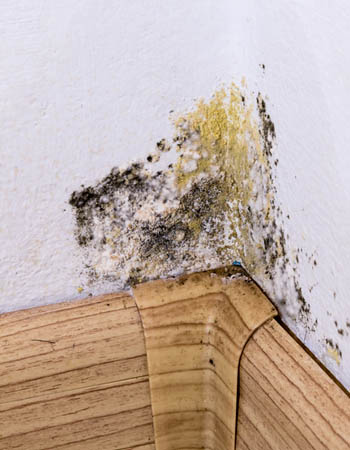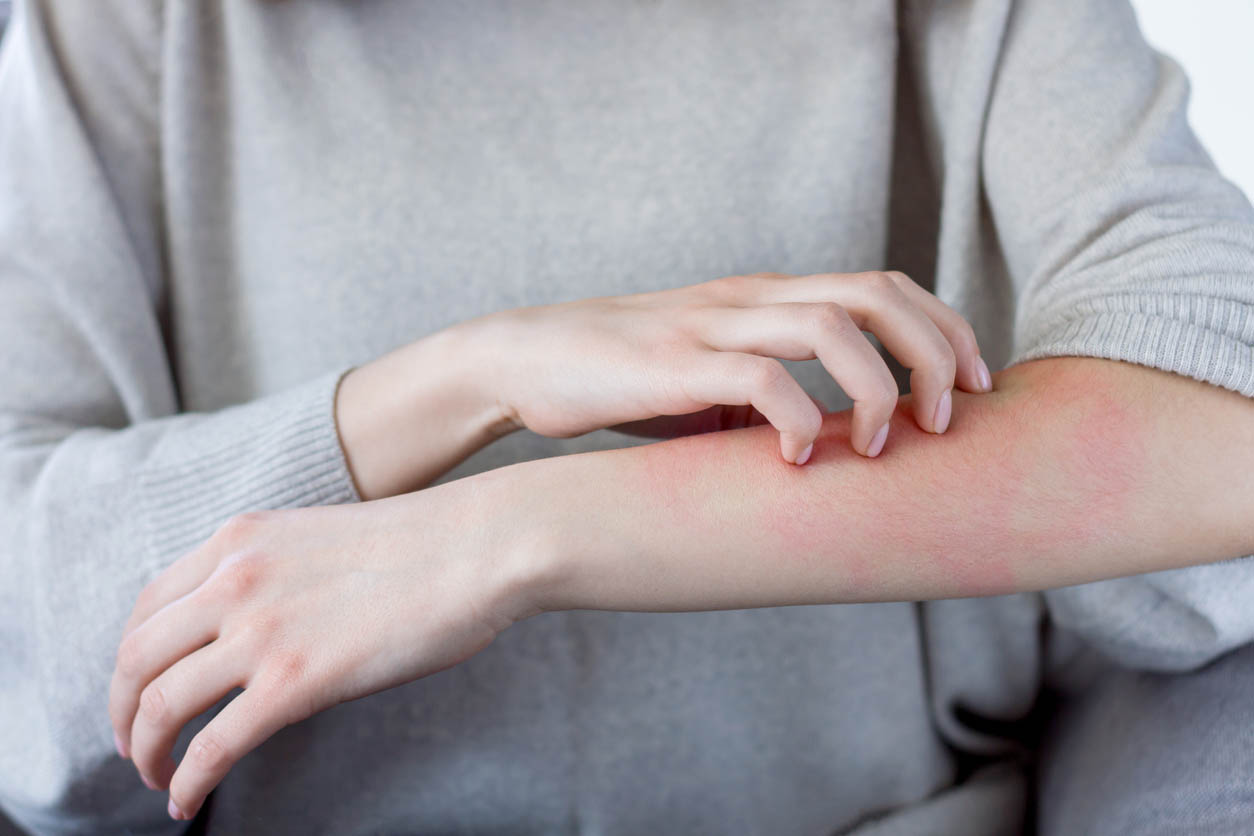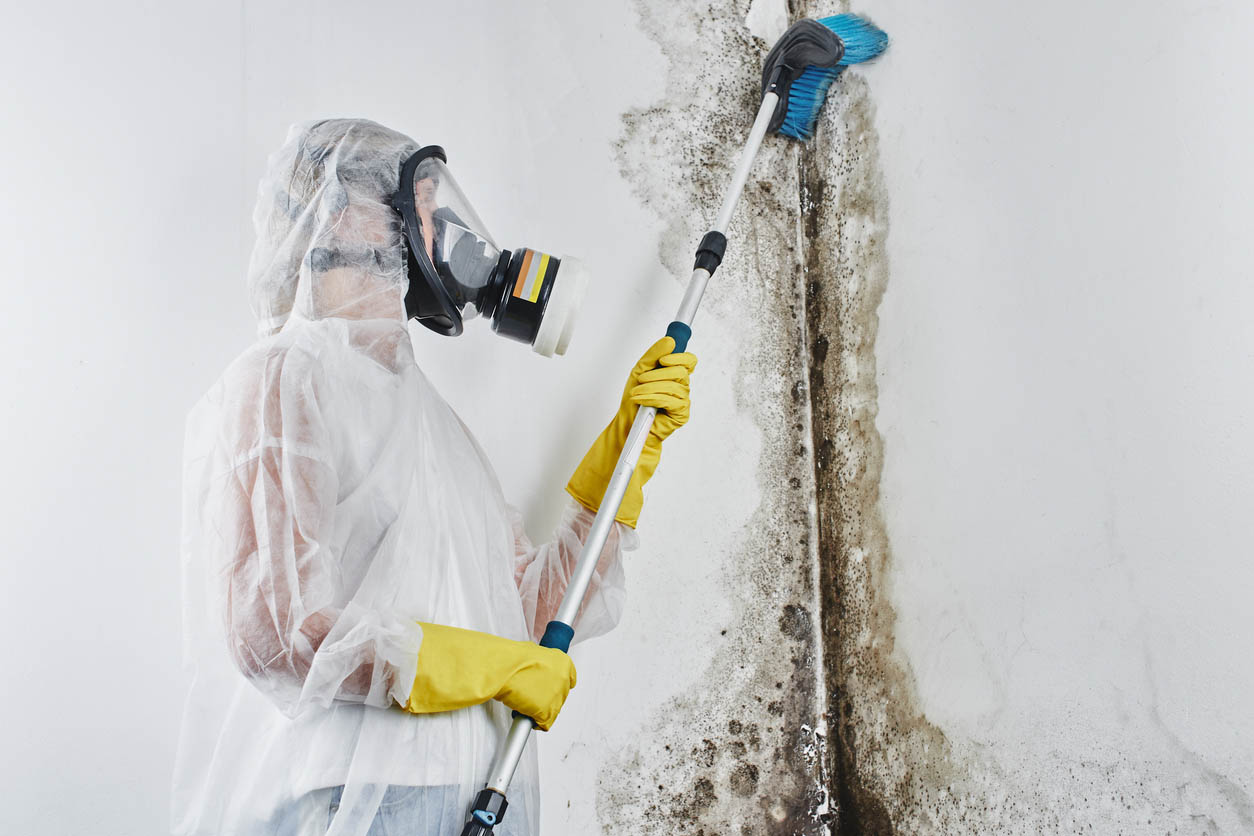

We may earn revenue from the products available on this page and participate in affiliate programs. Learn More ›
Q: A neighbor told me they found mold containing mold mites in their home. What are mold mites, and are they dangerous?
A: Mold mites, also known as Tyrophagus putrescentiae, are tiny arthropods with an average size of .03 millimeters. They are comparable to dust mites in terms of their size; however, their main difference is mold mites feed primarily on mold.
Mold mites are nearly invisible to the human eye. For reference, a tiny mold patch can house thousands of mold mites. They thrive in warm and humid climates where mold, their food source, is abundant. It’s important to note several insects that could be mistaken for mold mites, including mites found in flour or other food products.
Here’s how to properly spot mold mites and what to do if you see them in your home.
Mold mites are hairy insects that live on mold and use it as their primary source of food.

Mold mites have soft bodies with long “hair” that’s used as sensory receptors. They do not have wings and typically are white or tan. A mold mite’s primary food source is mold, and mites can be found on mold patches and food with moldy surfaces. They’ve also been known to eat fungi and yeast and food products that are high in protein and fat. Mold mites can be mistaken for cheese mites or pantry mites, especially when they are forced to migrate to find new food sources.
Mold mites do not bite and pose no serious threat to humans.
Mold mites are so small they’re unable to contribute to any structural damage to a home. Some mistake patches of irritated skin or small raised bumps to a mold mite bite, but these are usually allergic reactions caused by the mold itself or a reaction to the mold mites’ hairs. Mold mites do not bite and pose no serious threat to humans, as they usually aren’t noticed until their food source (mold) has become abundant within a property.

Mold mites, however, can cause an allergic reaction.
While mold mites cannot bite, the hair on their bodies, known as setae, can break off and cause an allergic reaction, causing itchy skin or raised bumps due to contact dermatitis. Some may even report feeling mild stinging when in contact with a mold mite. However, it’s difficult to know whether the allergic reaction is caused by a reaction to mold mites or the mold itself.
If left untreated, mold can cause wheezing, sneezing, and shortness of breath as one inhales the mold spores. Both mold and mold mites can affect sensitive or immune-compromised individuals, so it’s essential for homeowners to promptly treat these allergens as soon as they become aware of the issue.
Mold mites are so tiny that the human eye can’t see them.
As mold mites are less than half a millimeter in size, they usually go unnoticed unless they disperse their colony or a mold patch grows in size. Their structure and size can be compared to other mites or ticks, as they are also arthropods. The best way to see if mold mites are within a patch of mold is to take a photo of the area with a high-definition camera and zoom in. It may be possible to see the small mold mites if you shine an LED light on the moldy surface, or there may be the presence of “mite dust”—a brown discoloration on shelving or other surfaces that could indicate a mold mite colony.
If there is mold in your house, expect mold mites to start a colony there.
Mold mites thrive in areas where there’s plenty of humidity and moisture, which is also a breeding ground for mold. These areas are usually the kitchen and bathroom. A small patch of mold can be expected to hold thousands of mold mites. Mold specimens containing mold mites will have a top layer of mold spores that appear to be moving slightly.
A mold mite’s lifespan is usually between 9 and 30 days. In that time, each female mold mite can lay up to 800 eggs. Mold mites are constantly repopulating their colony. If the mold is not treated, mold mites may become desperate for a new food source due to overpopulation or a change in the environment. They will then begin to migrate to other areas, ending up in food products or other areas of the property.

If you suspect you have mold or mold mites, contact a professional to remediate the situation.
Homeowners should contact and hire a professional if they believe mold or mold mites live in their home, especially if the moldy area is over 2.5 square feet. If homeowners attempt to remove the mold themselves, there’s the possibility that they may not eliminate all the mold spores.
Improper treatment of mold spores can cause them to burrow deeper into the area, disperse throughout the air, or even grow in new areas nearby. Subsequently, mold mites will have then found a new home that’s possibly more resistant to cleaning products with the ability to use these cleansers as a food source.
A professional will identify the type of mold and provide the correct treatment option for eliminating it from the property. They may utilize a spray or fog treatment with insecticide present to get rid of the mold mites. However, the best way to eliminate mold mites is to remove their food source: the mold. After the mold is removed, homeowners may wish to purify the air in their home and clean the area around the mold, such as any carpet or flooring.
